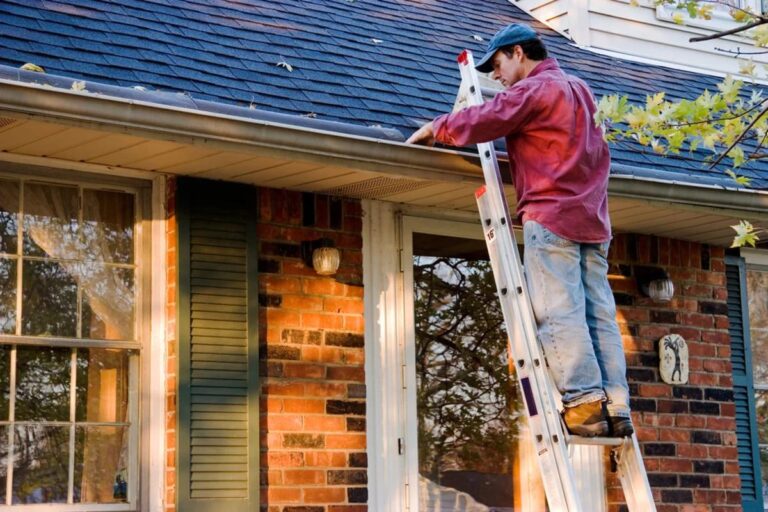Your roof plays a vital role in protecting your home from the elements, but over time, it can suffer damage due to harsh weather, debris, or simply wear and tear. Regular assessment and timely repairs are essential to maintaining its longevity. Here’s an ultimate guide to help you assess and repair roof damage efficiently.
1. Signs of Roof Damage to Watch For
Before diving into repairs, you need to know what signs to look for. Common indicators of roof damage include:
- Missing or damaged shingles: Check for cracked, curled, or missing shingles.
- Leaks or water stains: Water spots on ceilings or walls may indicate a leak.
- Sagging roof: A sagging roof suggests structural damage and requires immediate attention.
- Moss or algae growth: These can deteriorate shingles and retain moisture, leading to further issues.
- Granule loss: Shingle granules in gutters are a sign of aging.
- Peeling paint or exterior decay: These can indicate moisture buildup in your attic.
2. Performing a Roof Inspection
Regular roof inspections can help catch small problems before they turn into costly repairs. Here’s how to inspect your roof:
a) Exterior Inspection
- Visual check: From the ground, look for missing or damaged shingles, cracked flashings, and debris accumulation.
- Binoculars or drone: For hard-to-see areas, use binoculars or a drone to inspect without climbing onto the roof.
- Gutters and downspouts: Check for granule buildup or pieces of shingles in the gutters, as these can be signs of deterioration.
b) Interior Inspection
- Attic inspection: Check the attic for moisture, water stains, mold, or insulation damage.
- Ceiling inspection: Look for any discoloration, peeling paint, or water stains that could indicate leaks.
3. Common Types of Roof Damage
Understanding the types of damage your roof can sustain is crucial for effective repairs.
a) Wind Damage
High winds can lift shingles, causing cracks or making them fall off. This can expose the roof’s underlayment and lead to leaks.
b) Hail Damage
Hailstorms can cause dents and punctures in shingles, especially in metal or asphalt roofs. These dents can trap moisture and cause long-term issues.
c) Water Damage
If water penetrates through cracks or gaps, it can cause mold growth, wood rot, and structural damage.
d) Ice Dams
In colder climates, ice dams form at the roof edge, preventing proper drainage and causing water to back up under the shingles.
4. DIY Roof Repairs
For minor damage, you can handle repairs yourself with basic tools and materials. Here are a few DIY repair tips:
a) Replacing Missing or Damaged Shingles
- Carefully lift the damaged shingle and remove nails with a pry bar.
- Slide a new shingle into place and secure it with roofing nails.
- Apply roofing cement to ensure a watertight seal.
b) Sealing Small Leaks
- Locate the source of the leak from inside the attic.
- Use roof patching cement to cover the cracked or damaged area.
- Apply a patch if necessary and seal around roof vents, chimneys, or flashings with silicone caulk.
c) Clearing Debris
- Remove branches, leaves, and moss from the roof to prevent moisture buildup.
- Clean gutters regularly to ensure proper water drainage.
5. When to Call a Professional
While DIY repairs can save money, certain issues require a professional contractor. Contact a roofing expert if:
- You notice extensive water damage or leaks.
- The roof is sagging or has significant structural damage.
- There’s mold or mildew growth.
- The damage is beyond your expertise, or the roof is too steep to safely navigate.
6. Roof Replacement vs. Roof Repair
In some cases, repairs may not be enough, and a full roof replacement may be necessary. Consider a replacement if:
- Your roof is older than 20 years.
- There are large areas of missing or damaged shingles.
- The roof structure is compromised.
- You have persistent leaks or water damage despite multiple repairs.
7. Roof Maintenance Tips
To extend your roof’s lifespan and avoid costly repairs, regular maintenance is key:
- Trim overhanging trees: Falling branches can damage shingles, while leaves can clog gutters.
- Clean gutters: Ensure proper drainage to avoid water buildup.
- Inspect after storms: Check for damage after severe weather, such as high winds or hail.
- Seal flashing: Regularly inspect and seal around chimneys, skylights, and vents to prevent leaks.
- Schedule professional inspections: Have your roof professionally inspected at least once a year to catch issues early.
8. Hiring a Roofing Contractor
When hiring a contractor for significant roof repairs or replacements, consider the following:
- Licensed and insured: Ensure the contractor is licensed and carries insurance.
- References and reviews: Ask for references and check online reviews.
- Written estimate: Get a detailed written estimate outlining the cost, timeline, and scope of work.
- Warranty: Make sure the contractor offers a warranty for the repair or replacement.
Conclusion
Assessing and repairing roof damage promptly can prevent small issues from becoming costly problems. Regular inspections, proper maintenance, and knowing when to call in a professional can help you keep your roof in top condition for years to come. Always prioritize safety when conducting repairs, and don’t hesitate to consult an expert when needed.

